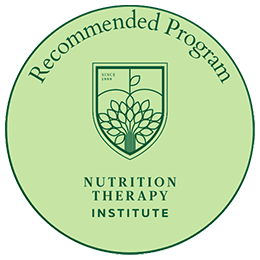ACNE ISN’T JUST HORMONAL—IT’S A SYSTEMIC INFLAMMATORY CONDITION, AND FUNCTIONAL PRACTITIONERS ARE UNIQUELY POSITIONED TO SHIFT THE NARRATIVE AND ADDRESS IT AT THE ROOT.
The Scope and Impact of Acne
Skin conditions are the number one reason for doctor visits in the U.S., and acne is the most common, affecting an estimated 50 million Americans annually. While it’s long been associated with adolescence, impacting up to 85% of teens, rates in adults, especially women, are rising (American Academy of Dermatology, 2025).
The emotional burden is profound: people with acne are 63% more likely to experience depression compared to those without (Wiley, 2018). Anxiety, social withdrawal, and diminished quality of life are common. Combined with an annual spend exceeding $1 billion on anti-acne cosmetics in the U.S. (Singh & Singh, 2024), it’s clear why this condition warrants deeper attention in our field.
As functional practitioners, we’re not just addressing a skin symptom. We have the opportunity to help resolve a visible inflammatory condition with systemic origins, while also impacting confidence, mood, and social well-being.
Why Hormones Aren’t the First Stop
In conventional dermatology, acne is often framed hormonally or treated topically using antibiotics, retinoids, spironolactone, oral contraceptives, or isotretinoin. While these approaches can temporarily reduce lesions, they frequently fail to provide lasting resolution and can even contribute to additional health concerns, as is especially the case with antibiotics (Dessinioti & Katsambas, 2024).
Even within the functional space, though, there’s a tendency to anchor acne to hormones as the root cause. While hormone shifts and conditions (e.g., puberty, perimenopause, PCOS) often contribute to acne, we must remember that hormonal imbalance is typically downstream.
What does that mean?
Acne is fundamentally an inflammatory condition, and inflammation is what ties together its multiple drivers, which include: gut dysbiosis, immune activation, histamine overload, metabolic dysfunction, and, yes, hormonal imbalance. Leading with or solely focusing on hormone-centric interventions risks missing the contributors that perpetuate the inflammatory environment in the first place.
To address acne comprehensively and achieve more effective results, we need to start upstream.
Foundational Drivers of Acne
When it comes to acne, there’s no single trigger or “one-size-fits-all” solution. It is inherently multifactorial, and effective support requires looking beyond the surface to uncover the upstream contributors fueling inflammation. While this list is by no means exhaustive, it is a strong starting point for building your acne assessment toolkit. By systematically evaluating these interconnected drivers, you can move past a hormone-first (or only) approach and develop targeted strategies that deliver lasting results.
Gut Dysbiosis and the Gut-Skin Axis
It will likely come as no surprise to you that research strongly supports a gut-skin axis in acne pathogenesis. People with acne often have reduced beneficial gut bacteria and increased pro-inflammatory species (Deng et al., 2018; Lee et al., 2024). Dysbiosis drives systemic inflammation and immune dysregulation, worsening skin barrier function. Clinical studies also suggest probiotic and dietary interventions can improve acne severity, highlighting gut restoration as a pivotal entry point (Goodarzi et al., 2020; Lee et al., 2024).
In practice, functional testing is essential for translating this science into targeted care. Stool testing, such as the GI-MAP, provides insight into bacterial imbalances and the downstream effects of dysbiosis, such as elevated beta-glucuronidase, which can impair estrogen metabolism and contribute to hormonally driven acne. It also evaluates markers like steatocrit, offering clues about bile flow, which is an often-overlooked factor in detoxification and skin health. Additionally, food sensitivity testing, such as the MRT, can help uncover immune-mediated food triggers that may drive or perpetuate gut inflammation and exacerbate skin symptoms.
Together, these tools enable us to build a clearer picture of the gut environment, identify driving factors fueling our client’s acne, and build a targeted and effective protocol.
Histamine: A Potent Driver of Sebum and Inflammation
Histamine receptors are expressed in sebaceous glands, and their activation directly increases sebum (oil) production (Pelle et al., 2008; Du et al., 2024). This is highly relevant to acne because excess oil can trap bacteria and debris in the pores, fueling inflammation and lesion formation. Additionally, certain yeast species like Malassezia thrive on oil and are implicated in a subtype of acne known as Malassezia folliculitis (Rubenstein & Malerich, 2014).
When histamine load is elevated, often due to things like gut dysbiosis, estrogen dominance, mold exposure, or mast cell activation, it can worsen sebum-driven pathways and inflammatory cascades that perpetuate breakouts.
Randomized trials show that H1-antihistamines combined with isotretinoin produce greater lesion reduction than isotretinoin alone (Fahrurodzi et al., 2023; Elsekily et al., 2024). Even topical antihistamines like meclozine demonstrate anti-inflammatory benefits in acne (Grange et al., 2022).
Functional testing is invaluable for uncovering histamine-related drivers. Stool testing, like the GI-MAP, can reveal bacterial imbalances that produce histamine or compromise gut barrier integrity. MRT food sensitivity testing can identify immune-mediated food reactions that provoke histamine release. Mycotoxin testing is crucial when mold exposure is suspected, as mold-derived toxins can trigger mast cell activation and significantly worsen histamine-related symptoms, including acne flares. Hormone testing, such as DUTCH, helps identify estrogen dominance, which can downregulate diamine oxidase (DAO) and impair histamine clearance, linking hormone imbalances directly to histamine-driven sebum production and inflammation.
Having this knowledge of the upstream contributors to histamine overload enables us to suggest targeted recommendations, such as gut-balancing protocols, histamine-lowering diets, mold remediation support, hormone balance support, and nutrient co-factors.
Metabolic Health and Acne
Poor metabolic health, including dysglycemia, high insulin, and impaired liver function, plays a significant role in acne.
Elevated insulin stimulates IGF-1, which drives androgen production and suppresses SHBG, resulting in higher free androgens (Melnik & Zouboulis, 2013; Sadowska-Przytocka et al., 2022). This promotes excess sebum and clogged pores, contributing to the development of acne. High-glycemic diets and frequent blood sugar spikes exacerbate this cycle, while low-glycemic, whole-food dietary patterns have been shown to reduce acne lesion counts and improve insulin sensitivity (Smith et al., 2007; Meixiong et al., 2022). Insulin resistance also increases inflammatory cytokines and oxidative stress, worsening skin barrier dysfunction.
Liver health is closely tied to this picture, given its important role in metabolism and glucose and insulin regulation (Bonnet et al., 2011). Liver dysfunction can lead to impaired detoxification and poor clearance of estrogens, other hormones, and fat-soluble toxins, all of which can fuel acne’s inflammatory and hormonal components.
In practice, metabolic assessment is essential to understanding insulin-driven acne. Comprehensive bloodwork, including blood sugar markers, a lipid panel, and liver function tests, provides essential data for evaluating your client's metabolic health. Continuous glucose monitoring can also offer a dynamic view of glycemic variability and post-meal spikes, revealing hidden blood sugar patterns that fuel inflammation and hormonal shifts.
By combining these assessments with dietary and lifestyle interventions, such as low-glycemic meal planning, strength training to improve insulin sensitivity, and circadian rhythm support for glucose control, you can address insulin-driven acne more effectively.
And, Yes, Hormones
Hormones remain part of the puzzle, and utilizing functional testing, such as the DUTCH, to assess them can still be a very important part of working with acne. Now, however, you can see how their imbalance is often a consequence of foundational issues. Dysbiosis and dysglycemia can cause estrogen dominance, which worsens histamine clearance issues, amplifying sebaceous inflammation. Insulin dysregulation heightens androgen sensitivity. Gut and metabolic dysfunction can alter hepatic clearance of sex hormones.
Viewing hormones this way repositions them as mediators influenced by upstream inflammatory drivers; not as the primary lever to pull first.
Why This Shift Matters
Acne is not a cosmetic nuisance. It’s a visible inflammatory condition rooted in systemic dysfunction. By reframing acne away from a hormone-centric lens and toward its inflammatory drivers, you can create better and more sustainable outcomes by addressing underlying physiology, as well as relieve both skin and emotional distress, improving your client’s quality of life.
This is a pivotal opportunity: acne’s prevalence, psychosocial burden, and systemic nature make it a high-impact condition for functional practitioners like you to address comprehensively.
Want to expand your ability to tackle acne at its root? Book a call with our admissions counselor to explore training in functional tools that allow you to take a comprehensive approach with your acne clients.
References
- American Academy of Dermatology. (2025, February 11). Skin conditions by the numbers. https://www.aad.org/media/stats-numbers
- Bonnet, F., Ducluzeau, P. H., Gastaldelli, A., Laville, M., Anderwald, C. H., Konrad, T., Mari, A., Balkau, B., & RISC Study Group. (2011). Liver enzymes are associated with hepatic insulin resistance, insulin secretion, and glucagon concentration in healthy men and women. Diabetes, 60(6), 1660–1667. https://doi.org/10.2337/db10-1806
- Deng, Y., Wang, H., Zhou, J., Mou, Y., Wang, G., & Xiong, X. (2018). Patients with acne vulgaris have a distinct gut microbiota in comparison with healthy controls. Acta Dermato-Venereologica, 98(8), 783–790. https://doi.org/10.2340/00015555-2968
- Dessinioti, C., & Katsambas, A. (2024). The microbiome and acne: Perspectives for treatment. Dermatology and Therapy, 14(1), 31–44. https://doi.org/10.1007/s13555-023-01079-8
- Du, Y., Zhou, X., Zhang, M., Zhang, Y., & Zhang, L. (2024). Impact of skin sensitivity mechanisms on sebum secretion: Management strategies for oily sensitive skin. Journal of Dermatologic Science and Cosmetic Technology, 1(2), 100017. https://doi.org/10.1016/j.jdsct.2024.100017
- Elsekily, E., Elgmal, E., & Aboelwafa, H. (2024). Comparative study between isotretinoin alone versus isotretinoin combined with either levocetirizine or desloratadine in the treatment of acne vulgaris. International Journal of Medical Arts, 6(12), 5236–5242. https://doi.org/10.21608/ijma.2024.295306.1981
- Fahrurodzi, D., Thadanipon, K., Rattanasiri, S., & Thakkinstian, A. (2023). Antihistamine as an adjunctive treatment in acne vulgaris: A systematic review and meta-analysis. Asian Journal of Social and Humanities, 2(1). https://doi.org/10.59888/ajosh.v2i1.161
- Goodarzi, A., Mozafarpoor, S., Bodaghabadi, M., & Mohamadi, M. (2020). The potential of probiotics for treating acne vulgaris: A review of literature on acne and microbiota. Dermatologic Therapy, 33, e13279. https://doi.org/10.1111/dth.13279
- Grange, P., Ollagnier, G., Remigereau, L., Nicco, C., Mayslich, C., Marcelin, A., Calvez, V., & Dupin, N. (2022). A new topical candidate in acne treatment: Characterization of the meclozine hydrochloride as an anti-inflammatory compound from in vitro to a preliminary clinical study. Biomedicines, 10(5), 931. https://doi.org/10.3390/biomedicines10050931
- Lee, L., Letchumanan, V., Law, J. W., Tan, L. T., Lim, H. F., Mutalib, N. S. A., Pusparajah, P., & Loo, K. Y. (2024). IDDF2024-ABS-0350: Untangling gut dysbiosis in acne vulgaris—insights and potential interventions. Gut, 73(Suppl 1), A207–A208. https://doi.org/10.1136/gutjnl-2024-IDDF.133
- Meixiong, J., Ricco, C., Vasavda, C., & Ho, B. K. (2022). Diet and acne: A systematic review. JAAD International, 7, 95–112. https://doi.org/10.1016/j.jdin/2022.02.012
- Melnik, B. C., & Zouboulis, C. C. (2013). Potential role of FoxO1 and mTORC1 in the pathogenesis of Western diet–induced acne. Experimental Dermatology, 22(5), 311–315. https://doi.org/10.1111/exd.12142
- Pelle, E., McCarthy, J., Seltmann, H., Huang, X., Mammone, T., Zouboulis, C., & Maes, D. (2008). Identification of histamine receptors and reduction of squalene levels by an antihistamine in sebocytes. Journal of Investigative Dermatology, 128(5), 1280–1285. https://doi.org/10.1038/sj.jid.5701160
- Rubenstein, R. M., & Malerich, S. A. (2014). Malassezia (pityrosporum) folliculitis. The Journal of Clinical and Aesthetic Dermatology, 7(3), 37–41. https://pmc.ncbi.nlm.nih.gov/articles/PMC3970831/
- Sadowska-Przytocka, A., Gruszczyńska, M., Ostałowska, A., Antosik, P., Czarnecka-Operacz, M., Adamski, Z., & Łącka, K. (2022). Insulin resistance in the course of acne—literature review. Postępy Dermatologii i Alergologii, 39(2), 231–238. https://doi.org/10.5114/ada.2021.107101
- Singh, A., & Singh, S. (2024). Anti-acne cosmetics market size – By product, by end use, by price range, by distribution channel analysis, share, growth forecast, 2024–2032 (GMI Insights Report GMI9314). GMI Insights. https://www.gminsights.com/industry-analysis/anti-acne-cosmetics-market
- Smith, R. N., Mann, N. J., Braue, A., Mäkeläinen, H., & Varigos, G. A. (2007). A low-glycemic-load diet improves symptoms in acne vulgaris patients: A randomized controlled trial. The American Journal of Clinical Nutrition, 86(1), 107–115. https://doi.org/10.1093/ajcn/86.1.107
- Wiley. (2018, February 7). Acne linked with increased risk of depression. ScienceDaily. https://www.sciencedaily.com/releases/2018/02/180207120651.htm
About the Author

Sara Fields has been an instructor with RWS since March 2019. She teaches and mentors across all four levels—Gastrointestinal Healing, Optimizing Hormones, Blood Chemistry, and Clinical Mastery—and also serves on the Leadership Team.






